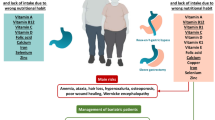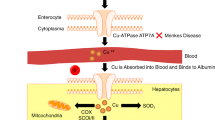Abstract
Glutathione peroxidase (Gpx1) is the major selenoprotein in most tissues in animals. Knockout (KO) of Gpx1 decreases Gpx1 activity to near zero and substantially reduces liver selenium (Se) levels, but has no overt effects in otherwise healthy mice. To investigate the impact of deletion of Gpx1 on Se metabolism, Se flux, and apparent Se requirements, KO, Gpx1 heterozygous (Het), and Gpx1 wild-type (WT) mice were fed Se-deficient diet for 17 weeks, then repleted with graded levels of Se (0–0.3 μg Se/g as Na2SeO3) for 7 days, and selenoprotein activities and transcripts were determined in blood, liver, and kidney. Se deficiency decreased the activities of plasma Gpx3, liver Gpx1, liver Txnrd, and liver Gpx4 to 3, 0.3, 11, and 50% of WT Se-adequate levels, respectively, but the Gpx1 genotype had no effect on growth or changes in activity or expression of selenoproteins other than Gpx1. Se repletion increased selenoprotein transcripts to Se-adequate levels after 7 days; Se response curves and apparent Se requirements for selenoprotein transcripts were similar to those observed in studies starting with Se-adequate mice. With short-term Se repletion, selenoenzyme activities resulted in three Se response curve patterns: (1) liver and kidney Gpx1, Gpx4, and Txnrd activities were sigmoidal or hyperbolic with breakpoints (0.08–0.19 μg Se/g) that were double those observed in studies starting with Se-adequate mice; (2) red blood cell Gpx1 activity was not significantly changed; and (3) plasma Gpx3 activity only increased substantially with 0.3 μg Se/g. Plasma Gpx3 is secreted from kidney. In this short-term study, kidney Gpx3 mRNA reached plateau levels at 0.1 μg Se/g, and other kidney selenoenzyme activities reached plateau levels at ≤ 0.2 μg Se/g, so sufficient Se should have been present in kidney. Thus, the delayed increase in plasma Gpx3 activity suggests that newly synthesized and secreted kidney Gpx3 is preferentially retained in kidney or rapidly cleared by binding to basement membranes in kidney or in other tissues. This repletion study shows that loss of capacity to incorporate Se into Gpx1 in Gpx1 KO mice does not dramatically alter expression of other Se biomarkers, nor the short-term flux of Se from intestine to liver to kidney.





Similar content being viewed by others
References
Rotruck JT, Pope AL, Ganther HE, Swanson AB, Hafeman DG, Hoekstra WG (1973) Selenium: biochemical role as a component of glutathione peroxidase. Science 179:588–590
Oh SH, Ganther HE, Hoekstra WG (1974) Selenium as a component of glutathione peroxidase isolated from ovine erythrocytes. Biochemistry 13:1825–1829
Kryukov GV, Castellano S, Novoselov SV, Lobanov AV, Zehtab O, Guigo R, Gladyshev VN (2003) Characterization of mammalian selenoproteomes. Science (Washington, DC) 300:1439–1443
Hatfield DL, Schweizer U, Tsuji PA, Gladyshev VN (2016) Selenium. Its molecular biology and role in human health. Springer, New York 628 p
Sunde RA (2012) Selenium. In: Shils ME, Shike M, Ross CA, Caballero B, Cousins RJ (eds) Modern nutrition in health and disease. Lippincott Williams and Wilkins, Philadelphia, pp 225–237
Rayman MP (2012) Selenium and human health. Lancet 379:1256–1268
Ho YS, Magnenat JL, Bronson RT, Cao J, Gargano M, Sugawara M, Funk CD (1997) Mice deficient in cellular glutathione peroxidase develop normally and show no increased sensitivity to hyperoxia. J Biol Chem 272:16644–16651
Cheng WH, Ho YS, Ross DA, Valentine BA, Combs GF, Lei XG (1997) Cellular glutathione peroxidase knockout mice express normal levels of selenium-dependent plasma and phospholipid hydroperoxide glutathione peroxidases in various tissues. J Nutr 127:1445–1450
Labunskyy VM, Hatfield DL, Gladyshev VN (2014) Selenoproteins: molecular pathways and physiological roles. Physiol Rev 94:739–777
Lei XG, Evenson JK, Thompson KM, Sunde RA (1995) Glutathione peroxidase and phospholipid hydroperoxide glutathione peroxidase are differentially regulated in rats by dietary selenium. J Nutr 125:1438–1446
Sunde RA (2012) Selenoproteins: hierarchy, requirements, and biomarkers. In: Hatfield D, Berry MJ, Gladyshev V (eds) Selenium: its molecular biology and role in human health, 3rd edn. Springer, New York, p 137–152
Weiss SL, Evenson JK, Thompson KM, Sunde RA (1996) The selenium requirement for glutathione peroxidase mRNA level is half of the selenium requirement for glutathione peroxidase activity in female rats. J Nutr 126:2260–2267
Weiss SL, Evenson JK, Thompson KM, Sunde RA (1997) Dietary selenium regulation of glutathione peroxidase mRNA and other selenium-dependent parameters in male rats. J Nutr Biochem 8:85–91
Barnes KM, Evenson JK, Raines AM, Sunde RA (2009) Transcript analysis of the selenoproteome indicates that dietary selenium requirements in rats based on selenium-regulated selenoprotein mRNA levels are uniformly less than those based on glutathione peroxidase activity. J Nutr 139:199–206
Sunde RA, Raines AM, Barnes KM, Evenson JK (2009) Selenium status highly-regulates selenoprotein mRNA levels for only a subset of the selenoproteins in the selenoproteome. Biosci Rep 29:329–338
Sunde RA, Li JL, Taylor RM (2016) Insights for setting of nutrient requirements, gleaned by comparison of selenium status biomarkers in turkeys and chickens versus rats, mice, and lambs. Adv Nutr 7:1129–1138
Hadley KB, Sunde RA (2001) Selenium regulation of thioredoxin reductase activity and mRNA levels in rat liver. J Nutr Biochem 12:693–702
Hill KE, McCollum GW, Burk RF (1997) Determination of thioredoxin reductase activity in rat liver supernatant. Anal Biochem 253:123–125
Burk RF, Hill KE (2009) Selenoprotein P-expression, functions, and roles in mammals. Biochim Biophys Acta 1790:1441–1447
Renko K, Werner M, Renner-Muller I, Cooper TG, Yeung CH, Hollenbach B, Scharpf M, Köhrle J et al (2008) Hepatic selenoprotein P (SePP) expression restores selenium transport and prevents infertility and motor-incoordination in Sepp-knockout mice. Biochem J 409:741–749
Olson GE, Whitin JC, Hill KE, Winfrey VP, Motley AK, Austin LM, Deal J, Cohen HJ, Burk RF (2010) Extracellular glutathione peroxidase (GPX3) binds specifically to basement membranes of mouse renal cortex tubule cells. Am J Physiol Ren Physiol 298:F1244–F1253
Hill KE, Zhou J, McMahan WJ, Motley AK, Atkins JF, Gesteland RF, Burk RF (2003) Deletion of selenoprotein P alters distribution of selenium in the mouse. J Biol Chem 278:13640–13646
Schomburg L, Schweizer U, Holtmann B, Flohé L, Sendtner M, Köhrle J (2003) Gene disruption discloses role of selenoprotein P in selenium delivery to target tissues. Biochem J 370:397–402
Burk RF, Hill KE, Motley AK, Winfrey VP, Kurokawa S, Mitchell SL, Zhang W (2014) Selenoprotein P and apolipoprotein E receptor-2 interact at the blood-brain barrier and also within the brain to maintain an essential selenium pool that protects against neurodegeneration. FASEB J 28:3579–3588
Pietschmann N, Rijntjes E, Hoeg A, Stoedter M, Schweizer U, Seemann P, Schomburg L (2014) Selenoprotein P is the essential selenium transporter for bones. Metallomics 6:1043–1049
Olson GE, Winfrey VP, Hill KE, Burk RF (2008) Megalin mediates selenoprotein P uptake by kidney proximal tubule epithelial cells. J Biol Chem 283:6854–6860
Schweizer U, Streckfuss F, Pelt P, Carlson BA, Hatfield DL, Köhrle J, Schomburg L (2005) Hepatically derived selenoprotein P is a key factor for kidney but not for brain selenium supply. Biochem J 386:221–226
Chiu-Ugalde J, Theilig F, Behrends T, Drebes J, Sieland C, Subbarayal P, Kohrle J, Hammes A et al (2010) Mutation of megalin leads to urinary loss of selenoprotein P and selenium deficiency in serum, liver, kidneys and brain. Biochem J 431:103–111
Avissar N, Ornt DB, Yagil Y, Horowitz S, Watkins RH, Kerl EA, Takahashi K, Palmer IS, Cohen HJ (1994) Human kidney proximal tubules are the main source of plasma glutathione peroxidase. Am J Phys 266:C367–C375
Whitin JC, Bhamre S, Tham DM, Cohen HJ (2002) Extracellular glutathione peroxidase is secreted basolaterally by human renal proximal tubule cells. Am J Physiol Ren Physiol 283:F20–F28
Evenson JK, Sunde RA (1988) Selenium incorporation into selenoproteins in the Se-adequate and Se-deficient rat. Proc Soc Exp Biol Med 187:169–180
Knight SAB, Sunde RA (1988) Effect of selenium repletion on glutathione peroxidase protein in rat liver. J Nutr 118:853–858
Gladyshev VN, Arner ES, Berry MJ, Brigelius-Flohe R, Bruford EA, Burk RF, Carlson BA, Castellano S et al (2016) Selenoprotein gene nomenclature. J Biol Chem 291:24036–24040
Sunde RA, Evenson JK, Thompson KM, Sachdev SW (2005) Dietary selenium requirements based on glutathione peroxidase-1 activity and mRNA levels and other selenium parameters are not increased by pregnancy and lactation in rats. J Nutr 135:2144–2150
National Research Council (1995) Nutrient requirements of laboratory animals. National Academy Press, Washington, DC 173 p
Lawrence RA, Sunde RA, Schwartz GL, Hoekstra WG (1974) Glutathione peroxidase activity in rat lens and other tissues in relation to dietary selenium intake. Exp Eye Res 18:563–569
Sunde RA, Thompson KM, Fritsche KL, Evenson JK (2017) Minimum selenium requirements increase when repleting second-generation selenium-deficient rats but are not further altered by vitamin E deficiency. Biol Trace Elem Res 177:139–147
Lowry OH, Rosebrough NJ, Farr AL, Randall RJ (1951) Protein measurement with the Folin phenol reagent. J Biol Chem 193:265–275
Pfaffl MW (2001) A new mathematical model for relative quantification in real-time RT-PCR. Nucleic Acids Res 29:e45
Norheim F, Hui ST, Kulahcioglu E, Mehrabian M, Cantor RM, Pan C, Parks BW, Lusis AJ (2017) Genetic and hormonal control of hepatic steatosis in female and male mice. J Lipid Res 58:178–187
Pettit AP, Jonsson WO, Bargoud AR, Mirek ET, Peelor FF III, Wang Y, Gettys TW, Kimball SR, Miller BF, Hamilton KL, Wek RC, Anthony TG (2017) Dietary methionine restriction regulates liver protein synthesis and gene expression independently of eukaryotic initiation factor 2 phosphorylation in mice. J Nutr 147:1031–1040
Steel RGD, Torrie JH (1960) Principles and procedures of statistics. McGraw-Hill Book, New York
Sunde RA (2018) Selenium regulation of selenoprotein enzyme activity and transcripts in a pilot study with founder strains from the collaborative cross. PLoS One 13:e0191449
Dholakia U, Bandyopadhyay S, Hod EA, Prestia KA (2015) Determination of RBC survival in C57BL/6 and C57BL/6-Tg(UBC-GFP) mice. Comp Med 65:196–201
Burk RF, Olson GE, Winfrey VP, Hill KE, Yin D (2011) Glutathione peroxidase-3 produced by the kidney binds to a population of basement membranes in the gastrointestinal tract and in other tissues. Am J Physiol Gastrointest Liver Physiol 301:G32–G38
Thompson KM, Haibach H, Sunde RA (1995) Growth and plasma triiodothyronine concentrations are modified by selenium deficiency and repletion in second-generation selenium-deficient rats. J Nutr 125:864–873
Sunde RA, Thompson KM (2009) Dietary selenium requirements based on tissue selenium concentration and glutathione peroxidase activities in old female rats. J Trace Elem Med Biol 23:132–137
Acknowledgements
This research was supported by the University of Wisconsin Selenium Nutrition Research Fund (No. 12046295), and by an undergraduate University of Wisconsin Cargill-Benevenga Research Stipend (to JAL).
Author information
Authors and Affiliations
Contributions
All authors participated in the review of the manuscript. JAL and RAS mixed diets and conducted the mouse study; ETZ, ABB, and RAS conducted the selenoenzyme assays; ETZ and RAS conducted the qPCR assays; RAS conducted the statistics and wrote the manuscript.
Corresponding author
Ethics declarations
The animal protocol was approved by the Animal Care and Use Committee at the University of Wisconsin-Madison (protocol A005368).
Rights and permissions
About this article
Cite this article
Sunde, R.A., Zemaitis, E.T., Blink, A.B. et al. Impact of Glutathione Peroxidase-1 (Gpx1) Genotype on Selenoenzyme and Transcript Expression When Repleting Selenium-Deficient Mice. Biol Trace Elem Res 186, 174–184 (2018). https://doi.org/10.1007/s12011-018-1281-6
Received:
Accepted:
Published:
Issue Date:
DOI: https://doi.org/10.1007/s12011-018-1281-6




